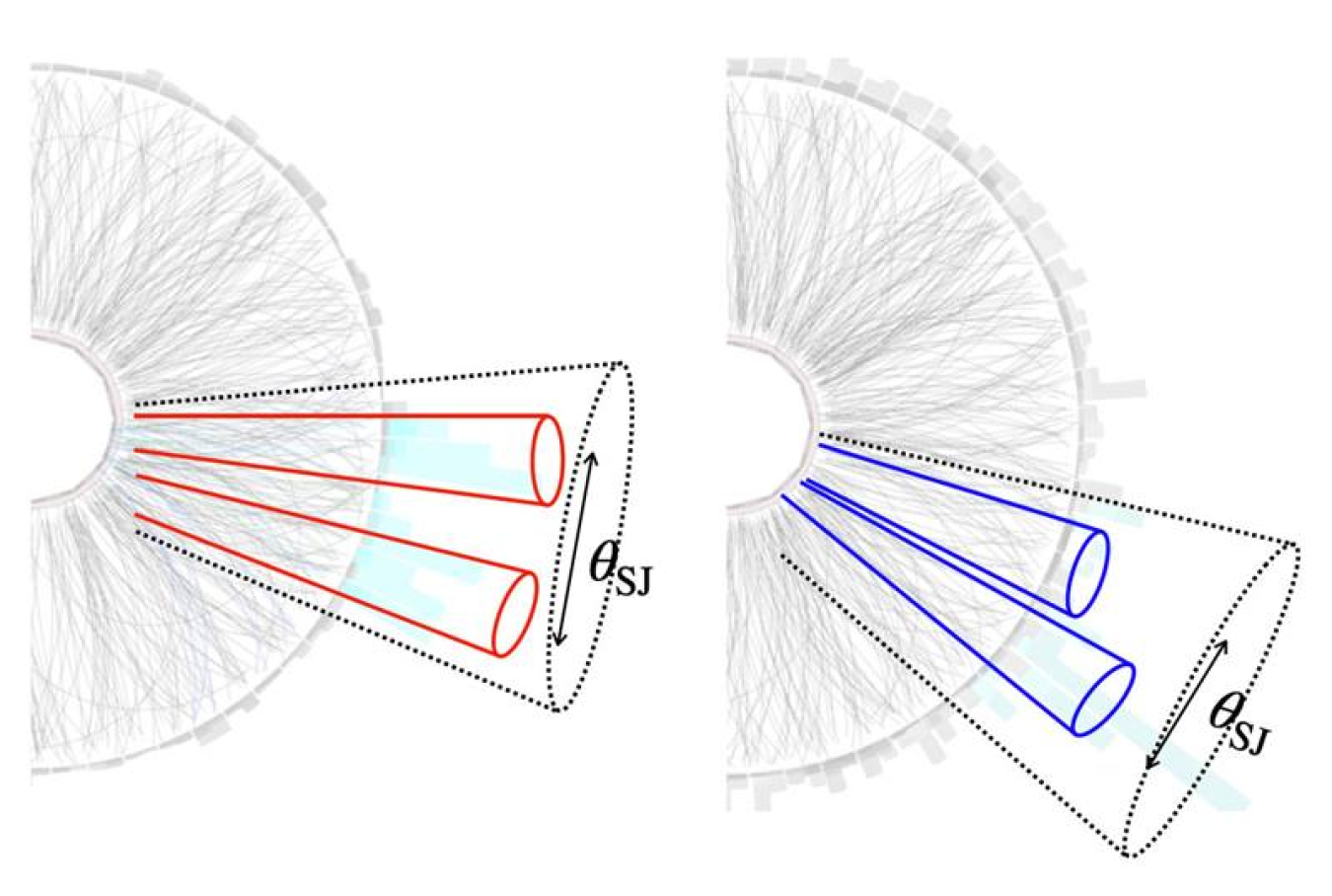
The Science
Scientists collide atomic nuclei at very high energies to recreate the conditions of the very early universe. The collisions “melt” the boundaries of individual protons and neutrons, setting free their inner building blocks—quarks and gluons—to form a quark-gluon plasma (QGP). Quarks or gluons in the colliding ions sometimes scatter off one another and then split, forming narrow sprays of particles called jets. By tracking how these jets lose energy, scientists can learn about properties of the QGP. New results reveal that some quarks lose energy by interacting with the plasma even before they split to form a jet.
The Impact
Knowing the specific mechanism of energy loss, or “quenching,” for these particular jets will help theorists refine mathematical descriptions of QGP “transport properties.” These are properties that describe how objects move through the plasma, somewhat analogous to the viscosity and density of water. The understanding also gives physicists a way to zero in on how single quarks interact with the QGP through the exchange of gluons. These quark-gluon interactions are the basis of the nuclear strong force, the strongest (and still most mysterious) of the four fundamental forces of nature.
Summary
Scientists used the STAR detector at the Relativistic Heavy Ion Collider (RHIC), a Department of Energy (DOE) user facility at Brookhaven National Laboratory, to study jets that are produced back-to-back and close to the surface of the QGP. Comparing the energy of the jet that easily escapes to that of the “recoil” jet traveling a longer route through the plasma tells them how much energy was lost. The scientists expected wider recoil jets to lose more energy than narrow ones. But they found instead that adding up the energy of all the high- and low-momentum particles within the recoil jet “cone” accounted for all the energy supposedly “lost” to quenching in both narrow and wide jets. This lack of a difference suggests that quenching occurs when a single quark radiates gluons as it interacts with the QGP before it splits to form the jet substructure. In both narrow and wide jets, the energy of the gluons is transformed into an abundance of lower momentum particles that all stay within the cone. If energy loss happened after splitting, the wider jets would have radiated particles beyond the cone. This approach will allow a differential study of the space-time evolution of the QGP.
Contact
Raghav Kunnawalkam Elayavalli
Yale University/Brookhaven National Laboratory
[email protected]
Kolja Kauder
Brookhaven National Laboratory
[email protected]
Funding
This research was supported by the DOE Office of Science, Nuclear Physics program, which also supports RHIC operations, and by the U.S. National Science Foundation and a range of international agencies.
Publications
Abdallah M. S., et al. (STAR Collaboration), Differential measurements of jet substructure and partonic energy loss in Au + Au collisions at √sNN = 200 GeV. Physical Review C 105, 044906 (2022). [DOI: 10.1103/PhysRevC.105.044906]
Related Links
Study Reveals How Some High-Energy Particle ‘Jets’ Lose Energy, Brookhaven National Laboratory news release
Scraped from https://www.sourcearu.com




